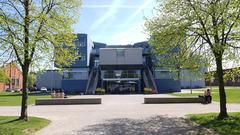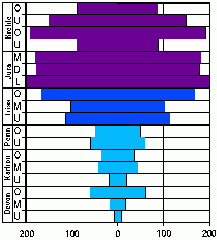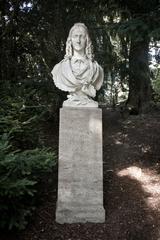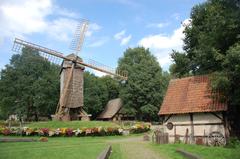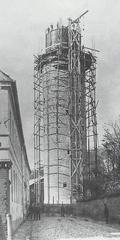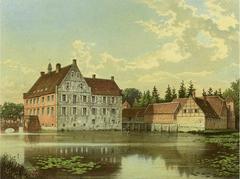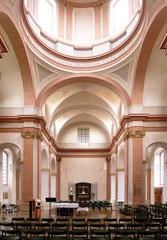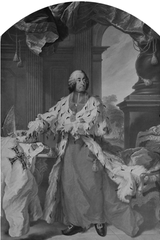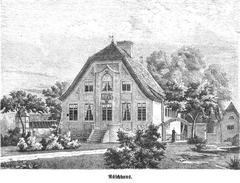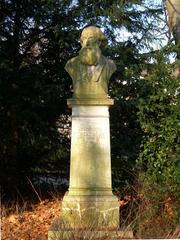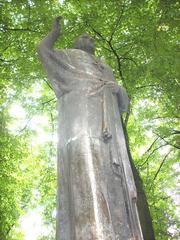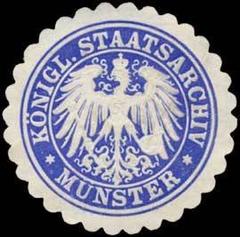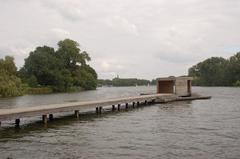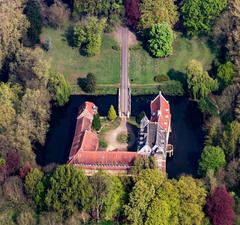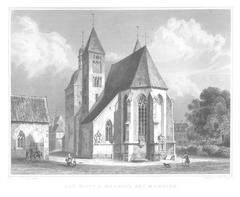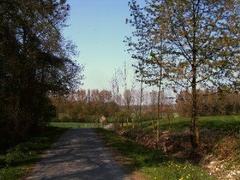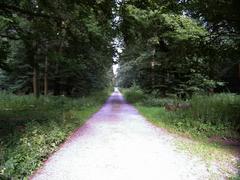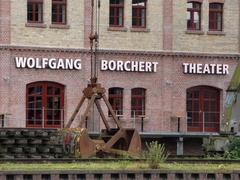Comprehensive Guide to Visiting Überwasserkirche, Münster, Germany
Date: 24/07/2024
Introduction: Overview of Überwasserkirche and its Significance
Nestled in the heart of Münster, Germany, the Überwasserkirche, or Church of Our Lady, stands as a monumental testament to the region’s rich historical and architectural heritage. This Gothic hall church, with its origins tracing back to 1040, is not only an architectural marvel but also a symbol of resilience and cultural evolution. Throughout the centuries, the Überwasserkirche has undergone significant transformations, from its initial Romanesque design to the Gothic features that now define its skyline. The church’s towering spire, intricate stone carvings, and stunning stained glass windows captivate visitors and historians alike. Beyond its architectural splendor, the Überwasserkirche holds profound religious and cultural significance, having played pivotal roles during the Reformation and surviving the ravages of World War II. Today, it continues to be a vibrant part of Münster’s community, offering a serene sanctuary for worship and a captivating destination for tourists. Whether you are an architecture enthusiast, history buff, or spiritual seeker, the Überwasserkirche promises a deeply enriching experience. (Wikipedia, Stadt Münster, Lonely Planet)
Table of Contents
- [Historical Background](#historical-backgroundhistorical-background)
- [Early Origins and Construction](#early-origins-and-constructionearly-origins-and-construction)
- [Architectural Evolution](#architectural-evolutionarchitectural-evolution)
- [Reformation and Religious Significance](#reformation-and-religious-significancereformation-and-religious-significance)
- [World War II and Reconstruction](#world-war-ii-and-reconstructionworld-war-ii-and-reconstruction)
- [Visitor Information](#visitor-informationvisitor-information)
- [Visiting Hours and Tickets](#visiting-hours-and-ticketsvisiting-hours-and-tickets)
- [Guided Tours and Special Events](#guided-tours-and-special-eventsguided-tours-and-special-events)
- [Nearby Attractions](#nearby-attractionsnearby-attractions)
- [Modern-Day Significance](#modern-day-significancemodern-day-significance)
- [Notable Features and Artifacts](#notable-features-and-artifactsnotable-features-and-artifacts)
- [Preservation Efforts](#preservation-effortspreservation-efforts)
- [Visitor Experience](#visitor-experiencevisitor-experience)
- [Conclusion](#conclusionconclusion)
- [FAQ](#faqfaq)
Historical Background
Early Origins and Construction
The Überwasserkirche, also known as the Church of Our Lady, is a significant historical and architectural landmark in Münster, Germany. The origins of the church date back to the 11th century, with the initial construction phase beginning around 1040. The church was built in the Romanesque style, which was prevalent in Europe during that period. The name ‘Überwasser’ translates to ‘over the water,’ referring to its location across the river from the Münster Cathedral.
Architectural Evolution
Throughout the centuries, the Überwasserkirche underwent several modifications and expansions. The original Romanesque structure was gradually replaced by Gothic elements, particularly during the 14th and 15th centuries. This transformation is evident in the church’s pointed arches, ribbed vaults, and flying buttresses, which are characteristic of Gothic architecture. The church’s tower, which stands at approximately 75 meters, was completed in the late 15th century and remains one of the most prominent features of Münster’s skyline.
Reformation and Religious Significance
The Überwasserkirche played a crucial role during the Reformation, a period of significant religious upheaval in Europe during the 16th century. Münster was a center of Anabaptist activity, and the church was temporarily seized by Anabaptists in 1534. This period, known as the Münster Rebellion, saw the city become a theocratic Anabaptist state. The rebellion was eventually suppressed in 1535, and the church was restored to Catholic control. The Überwasserkirche’s involvement in these events highlights its importance in the religious history of Münster.
World War II and Reconstruction
The Überwasserkirche, like many historical buildings in Germany, suffered extensive damage during World War II. Allied bombing raids in 1943 and 1944 severely damaged the church, leaving it in ruins. The post-war period saw a concerted effort to rebuild and restore the church to its former glory. Reconstruction work began in the late 1940s and continued through the 1950s. The restoration aimed to preserve the church’s historical and architectural integrity while incorporating modern building techniques.
Visitor Information
Visiting Hours and Tickets
The Überwasserkirche is open to visitors throughout the year. Typical visiting hours are from 9:00 AM to 6:00 PM, Monday through Saturday. On Sundays, the church is open from 12:00 PM to 5:00 PM. There is no entrance fee for visitors, but donations are appreciated to support ongoing preservation efforts.
Guided Tours and Special Events
Guided tours of the Überwasserkirche are available and provide detailed insights into the church’s architectural features and historical background. Special events, such as organ concerts and religious festivals, are held throughout the year, enhancing the visitor experience.
Nearby Attractions
The Überwasserkirche is located in the historic Überwasser Quarter, which offers a variety of attractions for visitors. Nearby, you can explore the Münster Cathedral, the LWL Museum of Art and Culture, and the Prinzipalmarkt, a historic marketplace. The area is also known for its charming streets, historic buildings, and vibrant cultural scene.
Modern-Day Significance
Today, the Überwasserkirche stands as a testament to Münster’s rich historical and cultural heritage. It continues to serve as a place of worship and a popular tourist attraction. The church’s historical significance is recognized by its designation as a protected cultural monument. Visitors to the Überwasserkirche can explore its stunning Gothic architecture, learn about its storied past, and appreciate its role in the religious and cultural life of Münster.
Notable Features and Artifacts
The Überwasserkirche houses several notable features and artifacts that reflect its historical and religious significance. One of the most remarkable elements is the church’s stained glass windows, which depict various biblical scenes and saints. These windows, some of which date back to the 14th century, were meticulously restored after the war. The church also contains several medieval sculptures and altarpieces, including a 15th-century depiction of the Virgin Mary, to whom the church is dedicated.
Preservation Efforts
Ongoing preservation efforts ensure that the Überwasserkirche remains a vital part of Münster’s cultural landscape. These efforts include regular maintenance, structural assessments, and conservation projects aimed at preserving the church’s historical features. The local community and various heritage organizations play a crucial role in supporting these initiatives, ensuring that future generations can continue to appreciate the church’s historical and architectural significance.
Visitor Experience
For visitors, the Überwasserkirche offers a unique opportunity to explore a piece of Münster’s history. Guided tours are available, providing insights into its architectural features and historical background. The surrounding area, known as the Überwasser Quarter, is also worth exploring, with its charming streets, historic buildings, and vibrant cultural scene. Visitors can enjoy a leisurely stroll along the river, visit nearby museums, and experience the rich history and culture of Münster.
Conclusion
The Überwasserkirche is more than just a historical building; it is a symbol of Münster’s resilience and cultural heritage. Its rich history, architectural beauty, and religious significance make it a must-visit destination for anyone interested in exploring the historical and cultural fabric of Münster. Whether you are a history enthusiast, an architecture aficionado, or a curious traveler, the Überwasserkirche offers a fascinating glimpse into the past and a deeper understanding of Münster’s enduring legacy.
FAQ
Q: What are the opening hours of Überwasserkirche?
A: The typical visiting hours are from 9:00 AM to 6:00 PM, Monday through Saturday, and from 12:00 PM to 5:00 PM on Sundays.
Q: Are there guided tours available at Überwasserkirche?
A: Yes, guided tours are available and provide detailed insights into the church’s architectural features and historical background.
Q: Is there an entrance fee for Überwasserkirche?
A: There is no entrance fee, but donations are appreciated to support ongoing preservation efforts.
Q: What are some nearby attractions?
A: Nearby attractions include the Münster Cathedral, the LWL Museum of Art and Culture, and the Prinzipalmarkt, a historic marketplace.
Call to Action
Explore more of Münster’s historical sites and plan your visit to the Überwasserkirche today. Download the Audiala mobile app for more travel tips and updates, and follow us on social media for the latest news and events.
